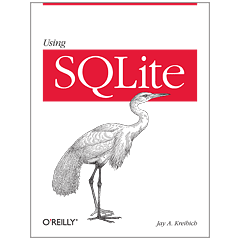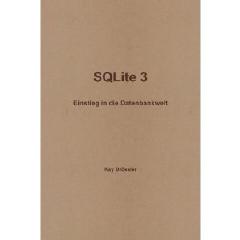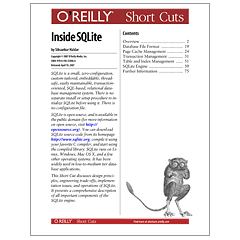
|
Books About SQLite
|
Using SQLite (2010)
Author: Jay A. Kreibich Developers, take note: databases aren't just for the IS group any more. You can build database-backed applications for the desktop, Web, embedded systems, or operating systems without linking to heavy-duty client-server databases such as Oracle and MySQL. This book shows how you to use SQLite, a small and lightweight database that you can build right into your application during development. Applications that handle data have an enormous advantage today, and with SQLite, you'll discover how to develop a database-backed application that remains manageable in size and complexity. This book guides you every step of the way. You'll get a crash course in data modeling, become familiar with SQLite's dialect of the SQL database language, and learn how you to work with SQLite using either a scripting language or a C-based language, such as C# or Objective C.Now, even relatively small and nimble applications can be a part of the data revolution. Using SQLite shows you how. |
|
SQLite 3 - Einstieg in die Datenbankwelt (2010)
Author: Key Droessler Die Datenbanksprache SQL ( Structured Query Language ) wird in Datenbanken zur Definition, Manipulation, Sicherung, aber hauptsaechlich zur Abfrage von Daten aus der Datenbank eingesetzt. Unabhaengig vom Betriebssystem oder aufwendigen, benutzerfreundlichen, graphischen Oberflaechen bleibt die Logik aber immer gleich.SQLite ist eine freie Desktop-Datenbank, sie kostet nichts, ist fuer viele Betriebssysteme verfuegbar, schnell heruntergeladen und installiert und auf das Notwendigste reduziert. Fuer den Einsteiger sind das die besten Voraussetzungen, ohne viel Aufwand schnell in die Welt der Datenbanken und Datenbanksprache reinzuschnuppern.Wer nach den Uebungen aber auf den Geschmack gekommen ist, hat schon den groessten Teil an Datenbanken und SQL gelernt, denn alles Besprochene ist Wissen, welches auch auf jedes andere der vielen Datenbanken grundlegend anwendbar ist. Nun koennen Sie auf die richtig Grossen zugehen, vom grossen Fachbuch bis zum riesigen Datenbanksystem. |
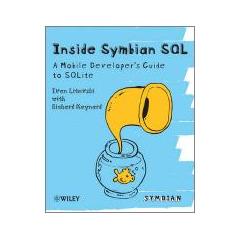 |
Inside Symbian SQL (2010)Authors: Ivan Litovski & Richard Maynard This is the definitive reference book on the Symbian SQL database which is based on SQLite. The authors (both members of the Symbian engineering team responsible for the implementation of the code) show you how to design code and ease migration from an internal and external point of view, plus they reveal the dos and don'ts of writing high-performance database applications. Packed with resources and sample code, this timely book reveals how to design and tune applications that use the Symbian SQL framework to ultimately improve performance. With its sample code and insider expertise, this text has everything you need to keep you ahead of the curve. |
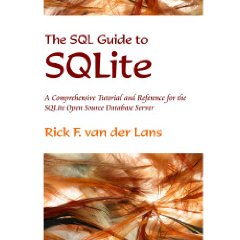 |
The SQL Guide to SQLite (2009)Author: Rick F. van der Lans SQLite is a small, fast, embeddable, SQL-based database server. It is easy to install, needs no management, and is open source. This book describes SQLite in detail. With hundreds of examples, plus a proven approach and structure, the book teaches you how to use SQLite efficiently and effectively. It contains a complete description of the SQL dialect as implemented in SQLite version 3.6. The book can be seen as a tutorial and a reference book. Source code for the numerous SQL examples and exercises included in this book can be downloaded from www.r20.nl. |
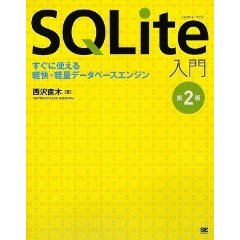 |
An Introduction to SQLite - 2nd Edition (2009)Author: Naoki Nishizawa This text is written in fluent Japanese specifically for a Japanese audience. This is the second edition of the book - the first edition was published in 2005. |
|
Inside SQLite (2007)
Author: Sibsankar Haldar SQLite is a small, zero-configuration, custom-tailored, embeddable, thread-safe, easily maintainable, transaction-oriented, SQL-based, relational database management system. There is no separate install or setup procedure to initialize SQLite before using it. There is no configuration file. SQLite is open source, and is available in the public domain (for more information on open source, visit http://opensource.org). You can download SQLite source code from its homepage http://www.sqlite.org, compile it using your favorite C compiler, and start using the compiled library. SQLite runs on Linux, Windows, Mac OS X, and a few other operating systems. It has been widely used in low-to-medium tier database applications. This Short Cut discusses design principles, engineering trade-offs, implementation issues, and operations of SQLite. It presents a comprehensive description of all important components of the SQLite engine. |
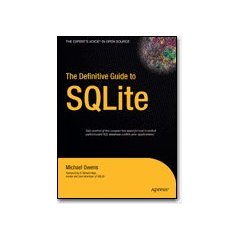
|
The Definitive Guide to SQLite (2006)
Author: Mike Owens Traditional relational databases and embedded databases both have shortcomings that can leave a developer perplexed. So for many people, the solution resides in SQLite, an open source embeddable database with an amazingly small footprint (less than 250 kilobytes). SQLite packs a powerful array of features and can handle databases as large as 2 terabytes. It offers a flexible set of datatypes and the ability to perform transactions, and it is supported by languages like C, PHP, Perl, and Python. And because SQLite's databases are completely file based, privileges are granted at the operating system level, allowing for easy and fast user management. The Definitive Guide to SQLite is the first book to devote complete coverage to the latest version of this powerful database. It offers you a thorough overview of SQLite capabilities and APIs, while remaining cognizant of newcomers who may be making their first foray into a database environment with SQLite. This book serves as both a first-time tutorial and future reference guide. You'll learn about SQLite extensions available for C, Java, Perl, PHP, Python, Ruby, and Tcl. The book thoroughly covers SQLite internals to help you take full advantage of its features while minimally impacting resource consumption. Author Mike Owens is the original creator of Pysqlite, the popular Python extension for SQLite. |

|
SQLite (2004)Author: Chris Newman SQLite is a small, fast, embeddable database. What makes it popular is the combination of the database engine and interface into a single library as well as the ability to store all the data in a single file. Its functionality lies between MySQL and PostgreSQL, however it is faster than both databases. In SQLite, author Chris Newman provides a thorough, practical guide to using, administering and programming this up-and-coming database. If you want to learn about SQLite or about its use in conjunction with PHP this is the book for you. |
*** DRAFT ***
